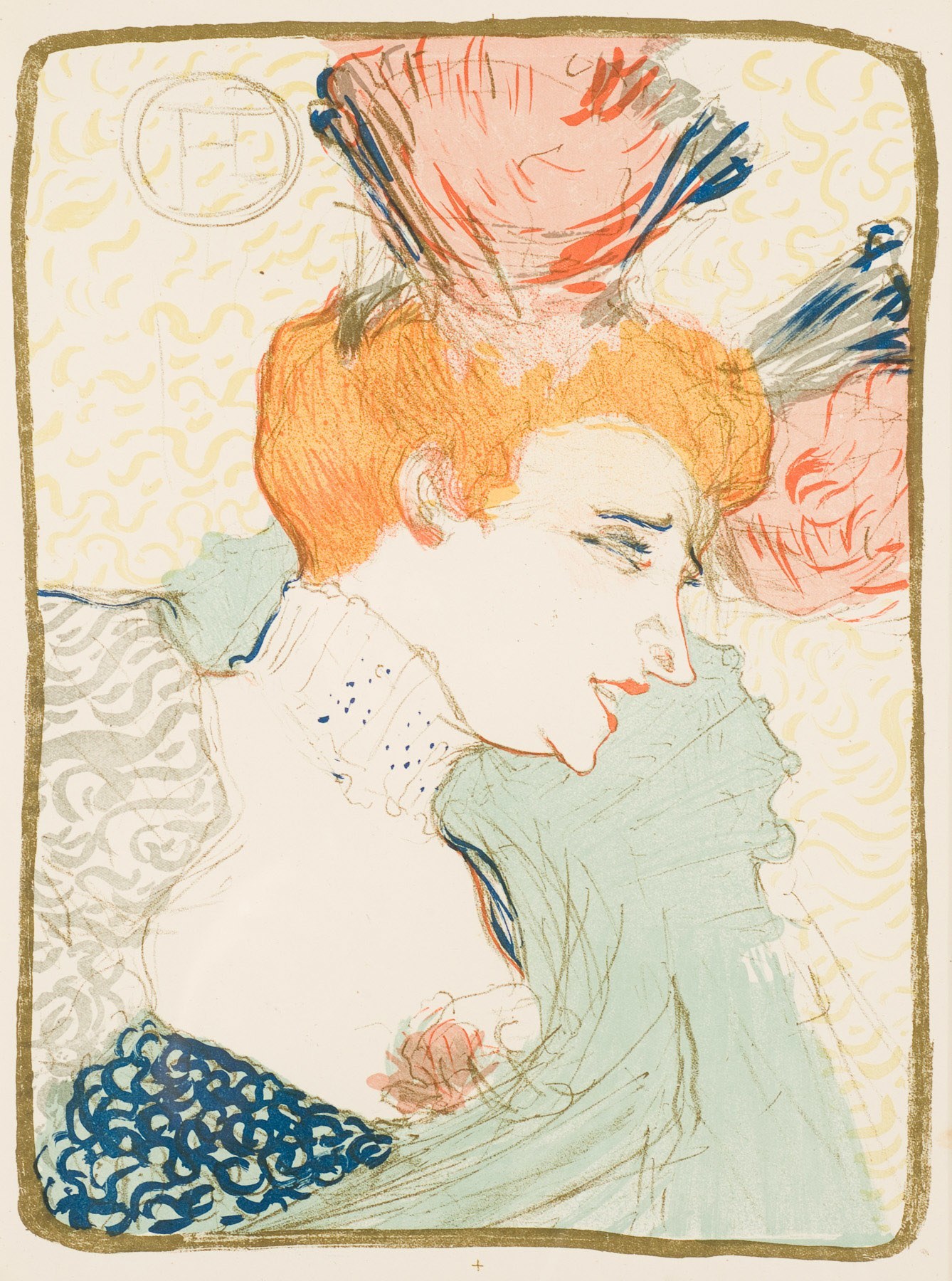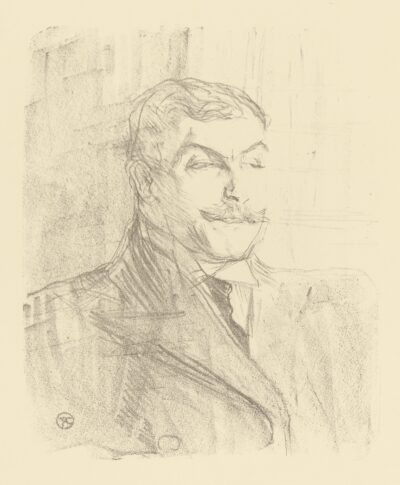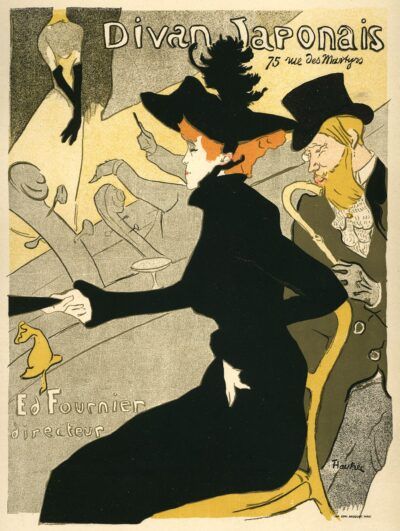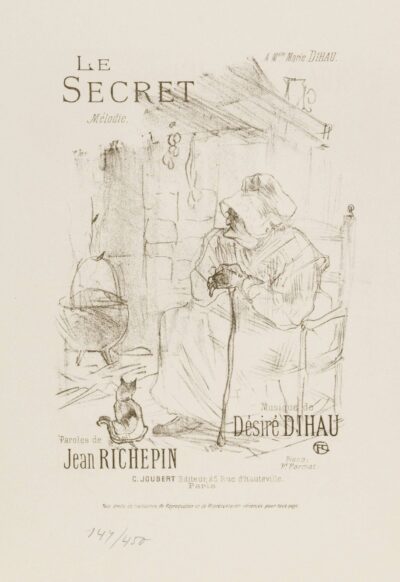Mademoiselle Marcelle Lender, En Buste
Henri de Toulouse-Lautrec
Mademoiselle Marcelle Lender, En Buste
Lithograph
1895
An original Henri de Toulouse-Lautrec Lithograph print.
1895
Original lithograph printed in eight colors (olive-green, yellow, grey, vermilion, carmine red, turquoise, dark blue, ochre) on wove paper.
Signed on the stone with the artist’s monogram device upper left.
A brilliant impression of Wittrock and Adriani’s fourth and final state, Delteil’s second state of three. Printed after the drawing of the headdress was completed on the red stone, from the edition of 1,211 published in the standard edition of German art review Pan, Volume I, No. 3, Berlin, 1895. Bearing the letterpress text lower left “ORIGINAL LITHOGRAPH IN ACHT FARBEN VON H. DE TOULOUSE_LAUTREC.PAN 1-3.”Published by Edouard Ancourt.
Catalog: Delteil 102 ii/iii; Adhemar 131; Wittrock 99 iv/iv; Adriani 115 iv/iv
12 3/4 x 9 5/8 inches
Sheet Size: 14 9/16 x 11 1/16 inches
Through the years 1893-95 Lautrec was mesmerized by the celebrated beauty and grace of the actress and singer Marcelle Lender. In this brilliant color lithograph she wears the same costume seen in Lautrec’s prints capturing moments of her performance as the Visigoth princess Galeswinthe in Hervé’s operetta Chilpéric, played in 1895 at the Théatre des Variétés. For her role she danced a sensational bolero, played castanets – unlikely choreography for action set in 7th century Merovingian France. Lautrec loved the way she would dance with her back to the audience; he went to see her in Chilpéric at least 20 times, always sitting in the same first row seat, admitting that he came only to see Lender’s beautiful back.
Lautrec portrayed her in 11 lithographs; she was the only performer whose features he did not distort or simplify into caricature, although in the portrait he was candid in drawing her double chin caught in the bright illumination of footlights. He evoked her vivacity with a multitude of wiry, wiggling lines.
The Pan magazine, founded in Berlin in 1895 as an independent organ of art and literature, counted among its contributors names ranging from Verlaine and Dehmel to Panizza, Heinrich Mann and Maeterlinck. In Otto Julius Bierbaum and the twenty-seven year old Julius Meier-Graefe it had editor who were passionate advocators of all that was new. Meier-Graefe, who had come into contact with young French artists when he was in Paris on the staff of Samuel Bing’s gallery, was determined to propagate this in Germany and make Pan its main mouthpiece. But the project did not last long. Mieer-Graefe’s aim to make original French graphics accessible to his readers at a low cost met with considerable resistance from his financiers after the publication of Lautrec’s color lithograph, and they used a programmatic article by Alfred Lichtwark to speak out for maintaining the German character of the periodical. Finally, Meier-Graefe was urged to resign, especially since Lautrec, who provided the lithograph free of charge for the editors sake, was regarded, not only in court circles, as a prime example of French frivolity.





